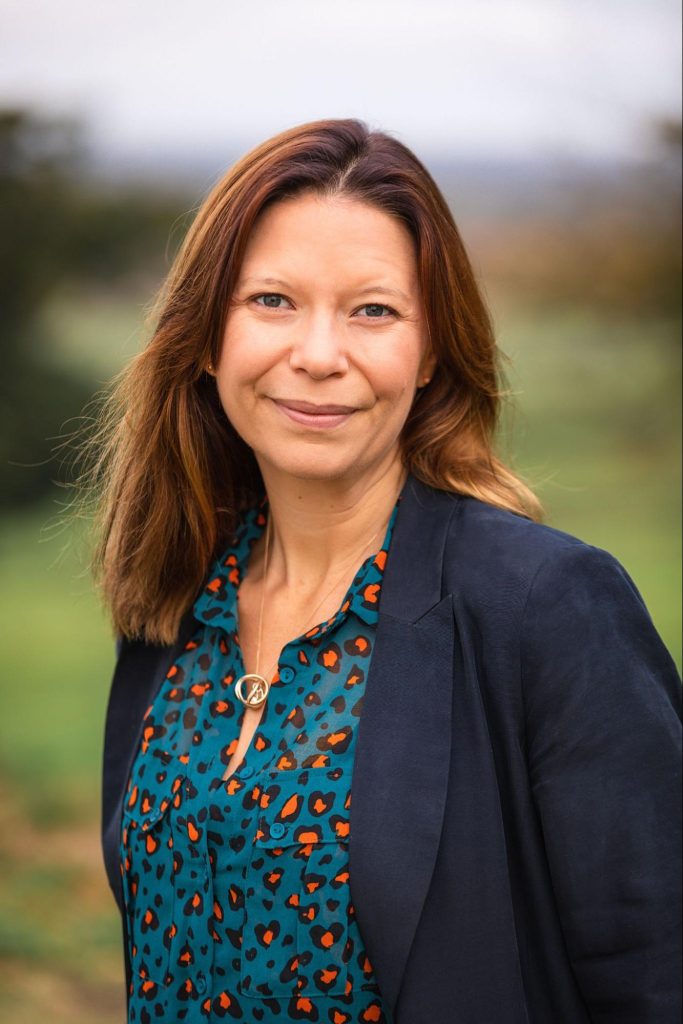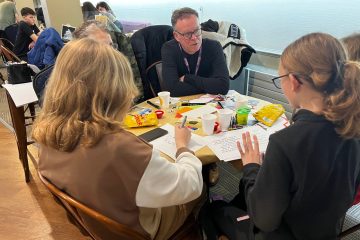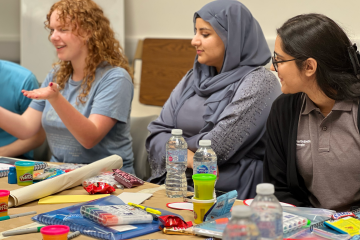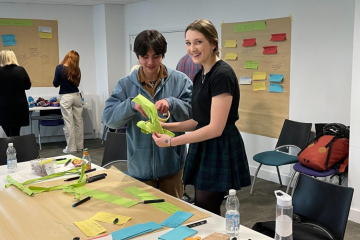
At Participation People, it’s our experience that when young people feel they are not being heard, or that their perspectives are not being taken into consideration, they quickly disengage. This is wholly understandable – imagine if someone was talking to you in a condescending manner, using methods of learning that did not resonate with you, or ignoring your opinions and perspectives altogether. For young people, this can lead to difficulties concentrating, lack of participation in events and activities, or even a hesitation in expressing concerns about their wellbeing or that of their peers.
Imagine what it must feel like to be a 16-year-old going to the GP for the first time alone with a wealth of negative interactions with older generations under your belt! A largely unappealing thought, right?
I lie awake at night wanting to understand the comparison in neurodevelopment between Gen Alpha, Gen Z, and my generation – the Xennials. How can I bridge the chasm that separates their beliefs and behaviours from mine? A recent report from The Skills Network found that Gen Z presents the most diverse range of learning requirements and preferences in comparison to their elders, yet are the most driven by growing their skill sets to contribute to a greater purpose. Finding ways to successfully engage with younger generations will help us to unlock their power in driving positive societal change. But, how do we find the key?
“Each generation has their own beliefs, attitudes, way of thinking, work ethic and preferences. As a result, each generation approaches social, economic, environmental, political, and technological contexts differently, and this impacts in turn upon how they learn.” (Time to Focus on the Generation Gap Between Teachers and Students by Sangeeta Doraiswami”)
Read on to delve into my thoughts on how we can bridge the generational learning gap.
Research Young Minds
Research, research and more research! I fear there is a big hole in research needed to inform and help professionals working with children and young people to bridge the generational learning gap. It’s time to get curious, in partnership with young people!
I read recently this article which discusses Steve Jobs’s approach to intelligence and I found it highly relatable and insightful, especially when working to empower and inspire young people today. The points about “what intelligence looks like” and the ability to “make connections” quickly, to move between projects rapidly, and to capture data and insights with ease really resonated with my experiences of working with young people.
Is the way we tap into young people’s intelligence outdated? The world is changing so rapidly that it feels as if the generational learning gap is getting wider by the second. It got me thinking about how we can (and must) adapt to make the most of how young people are evolving to learn and think today. Rather than resist it, it’s time to embrace it as a gateway for growth and opportunity.
Here are my top three takeaways for working with young people today:

Multi-platform learning
In today’s fast-paced digital age, young people have grown up with constant access to information and technology. Their ability to navigate multiple platforms and adapt to new tools is remarkable.
“Millennials want to work collaboratively across communities with ready access to technologies, which they see as being embedded in everything they do. They favour the concept of learning while doing, with regular coaching and feedback.” (Time to Focus on the Generation Gap Between Teachers and Students By Sangeeta Doraiswami”)
However, this love of technology can highlight the generational gap, particularly in education and healthcare systems. Often, as adults, we unintentionally expect young people to conform to our traditional methods of teaching and support, which may not align with their preferred modes of communication and learning.
Keep it fast
I’ve seen this in my stepchildren (ages 12 and 15) when we watch “old” films or play “vintage” board games together. They will quickly switch off, their brains thirsty for fast-paced, high-action productions and engagement activities. How often do you watch TV whilst answering messages on your smartphone?
I regularly ask myself if I’m turning into my Mum and Dad!
Unfortunately, this problem can be compounded in both formal and informal education, with young people finding themselves labelled as “naughty” or disengaged. Often, in reality, this is a result of their developing brains and our struggle to work alongside them to understand their unique experiences and youth perspective.
Take time to listen
Until the academic research and standards for engaging with young people catch up, I propose this – we, as adults, need to make a conscious effort to listen to young people in ways that work for them. We must recognise and adapt to their preferred modes of communication, whether through digital platforms, interactive activities, or open dialogue.
In fact, McKinsey & Company reported that 43% of businesses with more generationally varied management teams reported higher profits, shining a spotlight on the value of actually hearing, recognising and implementing youth perspectives alongside your own. By taking the time to understand their perspectives and experiences in ways that work for Gen Z and Gen Alpha, we can create a more inclusive and supportive environment that fosters growth and wellbeing.

Bridging the generational learning gap
Here at Participation People, we think about how we can bridge the generational learning gap a lot in order to get the best out of the young people we work with, and therefore deliver the best results for our clients. We like to practise what we preach!
Taking into account youth perspectives will inform better business decisions. The first place to start? Create an open dialogue with young people and ASK them what they need. If you’d like to book a call with me to chat through how gaining a youth perspective on your product or service could work for your business, please book a call directly here.


